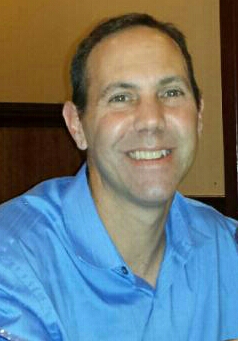I’m going to try to tear my 19-year-old daughter Rebecca away from college and sorority life for a night to see McFarland USA, the movie about a white coach at a predominantly Latino California high school who struggles to connect with students until he discovers a group of great runners, and builds a championship cross-country team with a long-enduring legacy from nothing. I figure it will have some shared meaning for us, with the importance that cross country has played in Rebecca’s life and my small role – at least I like to believe – in making it happen.
Rebecca was never a star athlete. She stuck with soccer longer than I thought she would, long enough to make an “A” team in eighth grade. But she never gelled with her new teammates, and after one fall season, she was done. In a soccer-mad county with intense competition, high school soccer was realistic only for the most talented and dedicated.
That summer before ninth grade I talked to Rebecca about considering running cross country in high school. I had done a couple of slow 5K road races with her before. Her mother is a big-time runner – not fast, but extremely disciplined and relentless – who has a number of marathons to her credit, so Rebecca always had that role model.
I played tennis through high school. After I saw my younger brother join the cross country team and enjoy the camaraderie and inspiration from the group effort and make long-lasting friends, I wished I had done the same. Remembering my brother’s rewarding experience, I thought Rebecca could benefit the same way.
But my periodic reminders that summer before ninth grade to Rebecca about the valuable experiences of cross country and if she was considering it at all, the need to train at least a minimal amount, seemed to be more annoying to her than helpful. Maybe that’s the inevitable reaction of a 13-year-old daughter to the advice of a father who claims wisdom from experience. Rebecca would respond anxiously that I was stressing her out with all that talk about going out for cross country and training, so I tempered my fatherly advice with backing off.
When mid-August came, I had no idea whether Rebecca would go to cross country tryouts. She did. I feared she wouldn’t survive a week in the humid, 90-degree heat with what little training she had put in. She did. There was a time-trial within the first week. I believe Rebecca missed the designated cutoff time, but not by much. But the great thing about cross country is there were no cuts. Perseverance, commitment and determination were rewarded, and whoever stuck with it long enough inevitably improved, and in almost all cases, greatly. That’s what Rebecca did.
I remember doing a few organized runs with Rebecca early in her high school cross country career, including one on a high school cross country course, where she would break down with a debilitating pain part way through, usually a cramp in the side, or have trouble breathing. I tried to be caring, but I was also frustrated when it happened. She should have kicked me in the ass for that. Sometimes the pains would happen at meets I attended.
But as her career went on and her body developed and got stronger and adapted to the rigors of the sport, those incidents faded. She became a top-10 runner on her team, a leader in spirit activities, and ultimately a captain. She improved her times for the 5K (3.1-mile) course by about 8 to 10 minutes from freshman to senior year. Perhaps most importantly, she made great friends on the team who constituted her social circle for four years – all of them excellent students and the type of kids a parent would want their own kid to hang out with. Also importantly, I believe cross country played a major role in increasing Rebecca’s self-esteem, self-confidence, intrinsic motivation and work ethic.
This is what I couldn’t have predicted more than five years ago when I felt I was on the verge of badgering my daughter to do something she didn’t want to do: She not only persisted at cross country, but she has become an accomplished distance runner in an amazingly short time, while carrying a full load as a full-time college student.
She has quickly built up over the past two years by running 10-mile events, half-marathons (13.1 miles), and metric marathons (16-plus miles). Then, in 2014, she announced she was going to run the Baltimore Marathon in October. I thought it might be a little too much to undertake as a college student, but she persisted, training with a group of adult marathoners all summer.
She finished the marathon in just over four hours, a month shy of her 19th birthday. How many 18-year-olds have a marathon to their name? I was proud to see her coming into the homestretch, heading toward the finish at the Baltimore football and baseball stadium complex, looking strong. She wasn’t trudging, either. I ran down the sidewalk for a ways to parallel her, and the pace was fast.
So hopefully we will share McFarland USA together, and reminisce about where Rebecca started and her running journey since then. It seems selfish to want to take a small bit of credit, but that’s my ego talking. Sometimes I like to know I did something right as a father, and whether Rebecca really needed a little push from me or not, I’d like to think I had a positive influence that has helped her enjoy and benefit from one of the most positive influences in her young life.
Posted in
father-daughter relationship,
persistence,
running,
self confidence,
self esteem and tagged
Baltimore Marathon,
cross country,
cross country race,
cross country team,
father-daughter,
half marathon,
high school sports,
marathon,
McFarland USA,
metric marathon,
running,
self-esteem


 percent, or nearly 1 out of every 4 men, at 60 to 69, according to the
percent, or nearly 1 out of every 4 men, at 60 to 69, according to the  but I am earning a good paycheck here, and in general it resolves this cognitive dissonance in favor of the familiar. At the bottom of every dilemma is fear.”
but I am earning a good paycheck here, and in general it resolves this cognitive dissonance in favor of the familiar. At the bottom of every dilemma is fear.”

 he opportunity to self-direct my future, embrace an entrepreneurial spirit, contribute value to society and work flexibly, creatively, collaboratively and independently. I explored life-coaching, completing a series of training courses, but ultimately didn’t pursue it. But the idea of
he opportunity to self-direct my future, embrace an entrepreneurial spirit, contribute value to society and work flexibly, creatively, collaboratively and independently. I explored life-coaching, completing a series of training courses, but ultimately didn’t pursue it. But the idea of 